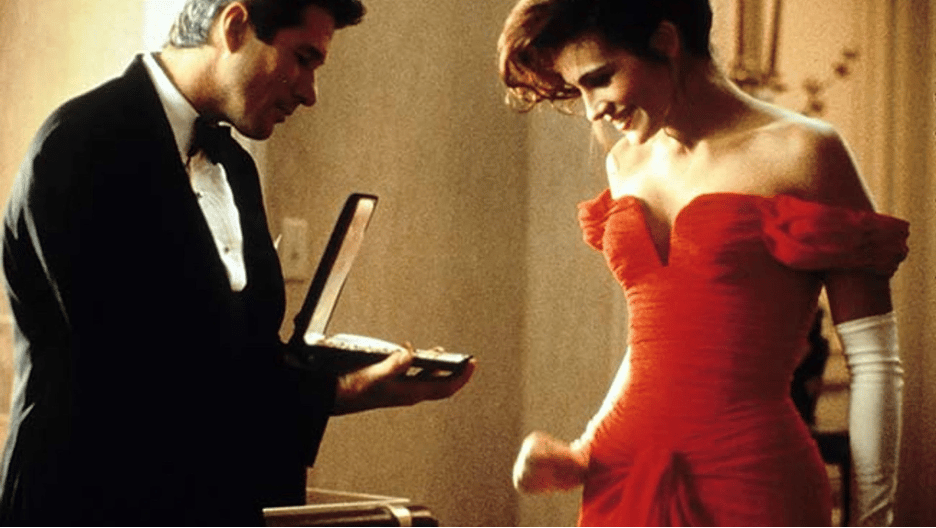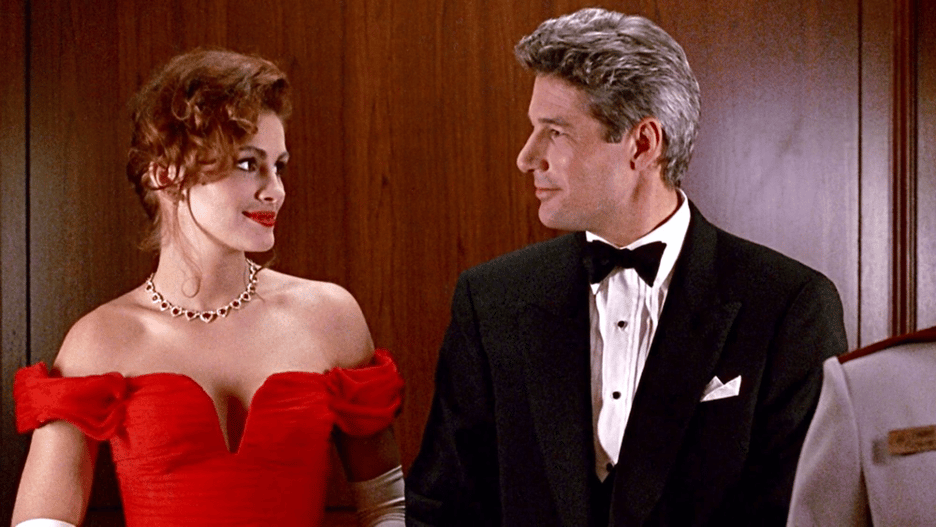- Captain Hook
- Posts
- You Can’t Hurry Love — Or PR.
You Can’t Hurry Love — Or PR.
A surprising number of brands reach out well before they’re ready. What I tell them, and why, offers key media strategy and biz dev insights for all.

Who doesn’t want to say yes to new business?
Especially when it arrives at your door. (Blessed be the referrals!) Yet as eager as I will always remain to welcome new clients on our platform, in certain cases the only sensible (and honorable) path to yes requires first saying not yet — as in: you’re not ready.
You’d likely be surprised how many otherwise savvy founders and/or CMOs badly miscalculate when it’s time to seek the media spotlight. And with plenty of PR purveyors all too happy for hopeful clients to leap prematurely into their accounts receivable column, jumping the gun can be a costly error.
Having been a scrappy founder myself, I get it. Unless we hail from within that world, most of us know dangerously little about the inner workings of the media relations ecosystem, where smoke, mirrors, and sleight-of-hand-hype invariably come with the territory. It’s always going to be a seductive proposition to believe PR will be a quick level-up, a magical way to leapfrog over venture challenges. (Oprah on line two!) And when we prematurely envision optimal scenarios, we effectively sell ourselves on a dream before our first agency meeting, saving those folks the effort.
Should veteran PR professionals do the right thing and responsibly disabuse prospective clients of impractical goals? Absolutely.
Will they?
Put it this way: I have experienced numerous times when a founder, CEO, CMO, or scrappy entrepreneur, in a quiet moment of candor after working with me for a while, has sighed like they’re unloading a painful secret and confessed, “I’ve been burned.”
Each story varies on the surface, but the bottom line is identical: they got caught up spending way too much money, and time, on PR efforts that went nowhere.
I don’t like seeing anyone endure a bruisingly negative experience, it’s bad for our industry. But making sure they’re not burned under my watch is sacrosanct.
That’s why I never hesitate to drop the “not yet” card.
And, in my experience, these are the three most common reasons ventures are not yet ready for PR prime time:
Unrealistic expectations without enough runway.
Brand identity still in the oven, not ready for serving.
Haven’t solved for market fit/customer demand yet.
Now let’s unpack them one at a time — along with some strategies for course correcting.
Unrealistic expectations without enough runway

The client reaching out was a brand new skincare line eager to land a slew of press in top tier publications for their splashy launch… coming up in four weeks.
Mind you, this was a venture starting from zero media and market awareness. Even for a new product from established players like, say, Tata Harper or Sisley Paris, a month is woefully insufficient.
Digital disruption may have shortened media lead times overall, but they are still longer than most civilians realize, and that’s after getting to a yes. This is especially true for print, where fall is locked down in the spring and printed over the summer, but it’s also the case with digital outlets, TV, radio, or events.
Schedules need to align and, as with the stars, that rarely happens at the snap of a finger.
Stroll the catwalk — storming the cocktail party is a bad look
The media landscape around cosmetics and fashion in particular is super competitive. In this case, the product was innovative, which can make for a good story, but garnering positive attention is like strolling gracefully down the catwalk: a bold but still measured big for attention. It can’t be a mad sprint to beat someone’s stopwatch.
Both an art and a science, PR initiatives benefit from time and flexibility for trial and error. The work is about relationships as much as transactions (in some cases, even more so), and success typically requires interpersonal nuance and patience. Looking for immediate or quick-results coverage is simply unrealistic for all but the already famous.
PR also isn’t a fix-all solution for fundamental business challenges. For example, if you’re going to make next month’s sales results the sole value metric for whether to continue with a PR program, your expectations are unrealistic. It’s like raising the thermostat ten degrees and then turning the heat off to save energy because the room feels about the same five minutes later.
Patience pays, a lack thereof costs
For our cosmetics friends, “not yet” was not what they wanted to hear at the time. They shopped around for an agency partner that said all the “right” things instead. Then later down the road, after wasting big bucks, they returned to us for a complete make-over, thanking me for having been honest. From there, a long term engagement with Press Hook put them beautifully back on track.
Now, don’t get me wrong. It’s never easy, nor fun, confronting a client with the kind of constructive criticism they might receive only as criticism. I know how hard they’ve been working. Now I am telling them their precious child needs summer school and to repeat second grade. But the fact remains that we are not paid media and can never guarantee media placement. So my philosophy is that we always want to be positioned to exceed expectations at Press Hook rather than ever risk taking someone’s money only to underdeliver.
Brand identity still in the oven, not ready for serving

We’ve all seen how many celebrities launch liquor brands these days. Flashy star power is not the only marketing tool in the box for establishing an image that tells — and sells — a story, but the trend underscores the inescapable challenge for new arrivals to crowded shelves.
Brands need to establish a clear and compelling identity.
In this instance, our client was a new mezcal. Out of the gate, they mentioned that they would be changing their packaging. This wasn’t a problem per se. But then I started to notice how much they were struggling to nail down a concise mission statement.
And that made me nervous.
From there came more hesitating and second guessing around the new packaging. It became clear that they couldn’t settle on what the packaging should say because they fundamentally couldn’t settle on what the brand was about and how they wanted to be perceived.
Suffice it to say, no one can successfully pitch a story that isn’t clear — just as you can’t target an audience that hasn’t been defined yet.
Consider the Pretty Woman principle

Apropos of stars, it’s instructive to note that some of the most beloved movies of all time changed dramatically after they were finished. In fact, what often made those classics so indelible, so undeniable — what made them work — came from adjustments or additions realized only by putting them before an audience. (Just Google the original ending of Pretty Woman.)
And, of course, that refining and refinishing needs to happen before the movie is released. Discovering what is wrong or missing past that point is called a flop.
In other words, don’t go to the critics (read: the press) to discover what you have labored so hard on doesn’t entirely land yet. You need to know first, and then check, and then double-check, and then check again.
Enterprises with muddled messaging around their brand identity who think they’re ready for PR are like a Hollywood studio not quite sure yet if Pretty Woman should be a light romantic comedy or a searing prostitution drama. Don’t throw a brand still formulating or fine-tuning its identity out there to see what happens.
I can tell you what happens: failure.
Effective PR demands clarity
The messaging and the identity must be crystal clear — ideally at a glance — well before the brand is ready for its first close up and all the scrutiny that entails. Why this mezcal? What makes it matter? Who is it for? Focus group, test, solicit feedback, rinse and repeat. All that good stuff.
And if it’s still difficult, at all, for people to understand exactly what your brand is about, and why, consider it the height of danger to step out on the PR stage.
What’s extra dangerous is that you likely can’t rely on most PR providers to relay the tough-love truths that test audiences or other colleagues will offer reflexively. Agencies will never be invested like you are invested. They have many clients. You have one story to tell, one brand to protect and project.
Happily, the mezcal client took a pause for a few months per our advice — then returned to team Press Hook with a stronger brand identity that served up success in the end.
Patience pays. (Let’s drink to that!)
Haven’t solved for market fit/customer demand yet

Sometimes this is a direct byproduct of the prior issue, but it is also possible to have a bulletproof brand identity and not yet solved for market fit and/or customer demand.
Being excellent and being marketable are related, but they’re not the same.
For one, an excellent product won’t be competitive if the pricing isn’t right yet. We once had a promising new robe company eager for press validation that didn’t test the fabric they sourced from another vendor before sending samples to the press. The feedback was that the material simply wasn’t worth the price point.
Then there is the timing and positioning factor. You can develop and produce an amazing, original, crowd-pleasing romantic comedy, but if you’re going to theaters the same weekend as Pretty Woman, there’s a problem. (Maybe your crowd-pleasing romantic comedy project will do better as a Broadway musical instead?)
Put another way, avoiding failure-to-launch is as much about surveying a viable place to land as it is about securing the propulsion and engineering to get off the ground.
Beware the quick-fix mindset
PR is not going to pave over structural hurdles. We routinely turn away consumer apps that don’t have enough users yet. The inescapable truth is that apps need to first generate enough user traction and momentum before showcasing to press. Journalists want to discover heat. They won’t spend their time striking damp matches.
We also turn away products that don’t have enough retailers or limited market geography yet. One cool canned seltzer company, for example, had exactly two retailers in a single state. That’s just not a viable distribution scenario for seeking media attention. (Even if by some miracle they landed on the front page of the New York Times, their seltzer would be forgotten news by the time they could logistically meet any new consumer interest.) Another client was a new liquor brand available in three states, but still: how many local news outlets could there be to promote that story?
The juice is definitely not worth the squeeze yet.
Invest for long term success

Even once your fruit is fully ripe and ready, your average PR program still takes a considerable investment of time and money. Press Hook works to circumnavigate all that as much as possible, but it still remains malpractice to allow an enterprise to waste resources — and, worse, possibly risk irreparable harm to their long-term profile and marketplace viability — with a short-sighted, prematurely mounted bid for exposure.
Particularly in terms of nurturing the kind of media relationships that will pay compounding dividends over time, the old adage about only getting one chance to make a first impression holds true when dealing with top editors and journalists.
So how can you be sure you’re ready to make an investment in PR?
Our ready-to-launch-and-land PR checklist
Before investing in PR, make sure you can honestly answer yes to each of the following questions:
Do you have a clear message, style, mission, and set of values for your brand?
Do you have a distinct and compelling value proposition relative to direct competitors in your category/industry?
Do you have a solid social media presence and following?
Do you have positive customer reviews and testimonials online?
Do you have a PR timeline that allows for at least 3-6 months to start seeing coverage, given that editors and writers typically require considerable lead times before publishing?
Do you have the financial resources to support that 6 months, considering that effective PR typically requires about 10%-20% of an average brand’s marketing budget?
Do you have either prior firsthand PR experience or an informed understanding of today’s PR landscape, including all the differences between earned, paid, and owned media?
Do you have realistic PR goals, with brand awareness and credibility at the top of that list?
Do you have someone within your organization prepared and empowered to closely manage your PR efforts and the relationship(s) with PR service providers?
Do you have the supply chain and distribution resources in place to meet a potential surge of PR-generated consumer demand?
Let’s keep it moving together
This checklist is a useful quick reference tool. For a deeper dive, stay tuned for my next article, where we’ll unpack each of those these ten points with more detail and examples.
In the meantime, do you have any specific questions or concerns? Feel free to drop me a line. I’ll do my best to respond with whatever advice I can share.
Or maybe you have an instructive story about your own PR experiences? Hopefully some journalists and editors out there can weigh in from their side of the PR conversation as well. I am here for the whole community!
And, hey, sometimes getting burned is how we learn — but sparing others the same blisters can be a powerful way to pay it forward.
Reply